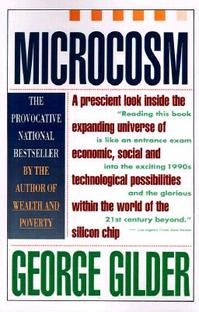(p. 224) Campbell’s idea for a company was to use a silicon compiler to put those boards into custom silicon and to provide a means by which scores of companies could produce AT clones faster, cheaper, better, and more reliable than IBM’s.
Campbell drew up his business plan and brought it to some fifty venture capitalists. A moneyed yawn issued from Sand Hill Road, echoed down the canyons of San Francisco’s financial district, and reechoed through downtown Manhattan. A jaded group that had funded some forty very hard disk projects and some fifty rather floppy computer firms within the previous two years, venture capitalists eyed Campbell’s boyish manner and lightweight look and they contemplated his business plan (a personal computer chip project during a PC and semiconductor depression), and they identified the heart of his overall strategy (compete with IBM). They rolled the firm’s proposed name over their tongues: Chips & Technologies. Wouldn’t Microtech be better? Then they laughed nervously. Not this time, Gordy.
Finally, Campbell found a friend: Bill Marocco, who had built the SEEQ headquarters, and had once offered to support a future project. Marocco put up $1 million, and Chips & Technologies was off the ground.
Source:
Gilder, George. Microcosm: The Quantum Revolution in Economics and Technology. Paperback ed. New York: Touchstone, 1990.



